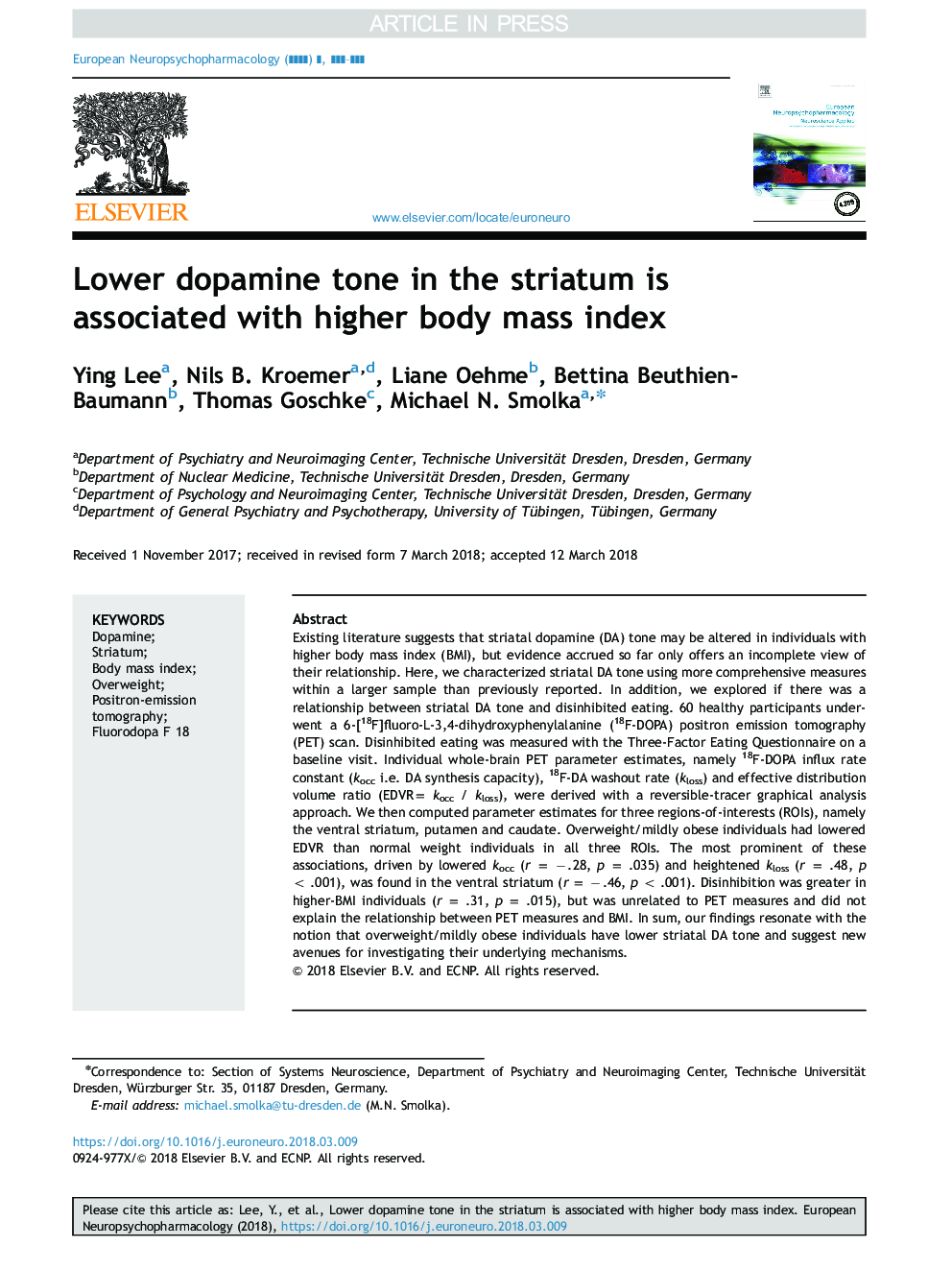| Article ID | Journal | Published Year | Pages | File Type |
|---|---|---|---|---|
| 6790455 | European Neuropsychopharmacology | 2018 | 13 Pages |
Abstract
Existing literature suggests that striatal dopamine (DA) tone may be altered in individuals with higher body mass index (BMI), but evidence accrued so far only offers an incomplete view of their relationship. Here, we characterized striatal DA tone using more comprehensive measures within a larger sample than previously reported. In addition, we explored if there was a relationship between striatal DA tone and disinhibited eating. 60 healthy participants underwent a 6-[18F]fluoro-L-3,4-dihydroxyphenylalanine (18F-DOPA) positron emission tomography (PET) scan. Disinhibited eating was measured with the Three-Factor Eating Questionnaire on a baseline visit. Individual whole-brain PET parameter estimates, namely 18F-DOPA influx rate constant (kocc i.e. DA synthesis capacity), 18F-DA washout rate (kloss) and effective distribution volume ratio (EDVR= kocc/ kloss), were derived with a reversible-tracer graphical analysis approach. We then computed parameter estimates for three regions-of-interests (ROIs), namely the ventral striatum, putamen and caudate. Overweight/mildly obese individuals had lowered EDVR than normal weight individuals in all three ROIs. The most prominent of these associations, driven by lowered kocc (r = â.28, p = .035) and heightened kloss (r = .48, p < .001), was found in the ventral striatum (r = â.46, p < .001). Disinhibition was greater in higher-BMI individuals (r = .31, p = .015), but was unrelated to PET measures and did not explain the relationship between PET measures and BMI. In sum, our findings resonate with the notion that overweight/mildly obese individuals have lower striatal DA tone and suggest new avenues for investigating their underlying mechanisms.
Related Topics
Life Sciences
Neuroscience
Biological Psychiatry
Authors
Ying Lee, Nils B. Kroemer, Liane Oehme, Bettina Beuthien-Baumann, Thomas Goschke, Michael N. Smolka,
